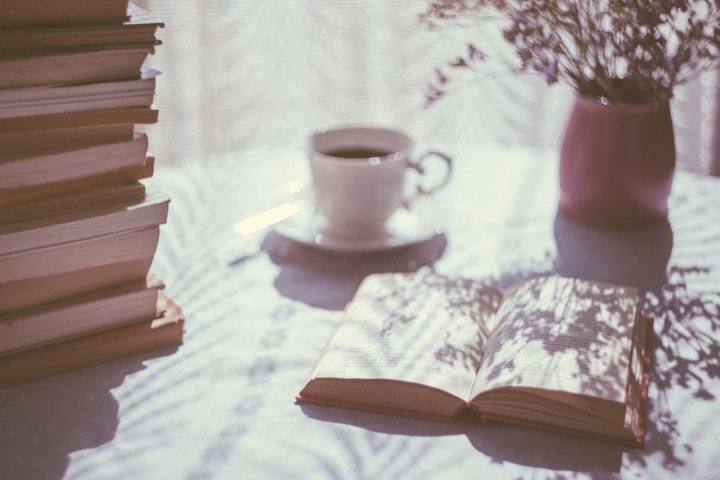Why Your Houseplants Hate You
It turns out that taking care of houseplants is hard.

There’s no doubt. My houseplants used to despise me. If they had appendages that could actually hold weapons, I have no doubt that they would have attacked me with serious injury as their ultimate goal.
They were definitely plotting against me via the “deep state” and I was constantly aware of any traps they had set around the house.
The thing is: I deserved their wrath.
Like so many people, I don’t really know how to take care of houseplants. Typically, there are not helpful instructions and too much of houseplant care has, I’m afraid, developed from suburban and urban myths and click bait articles that claim that houseplants can completely recycle the air in your home in 24 hours, remove all allergens and dust, brighten your mood so much that your anti-depressants can be tossed away like bad romaine lettuce and make you smarter.
In order to appease my vengeful houseplants and forestall any evolving and diabolical assassination plot, I’ve listed the five reasons why my houseplants despised me so that you can learn from my criminal mistreatment of them (did you hear that my freaked out fern?) and pick up some helpful tips on how to care for your houseplants.
# 1 Plants hate classical music and streaming channels
About 30 years ago, studies that forgot to actually do science announced that classic music -- especially Mozart – can make your unborn or recently born child smarter and your houseplants grow faster. So two things. First, Mozart will not make little Brandon or Caitlin any smarter. Second, houseplants will be screaming at you to play some Rihanna, Drake or Lady Gaga. It’s just that you don’t speak plant. My philodendron drooped and sagged every time I played Brahms or Bach and would only show signs of life when I played Cat Power, Dandy Warhols and Julia Michaels.
I actually have the feeling that after I leave for work in the morning my red-edged dracaena asks Alexa to play Billie Eilish, Halsey, Post Malone and its guilty pleasure – The Captain and Tennille from the 80s.
Moreover, many pet owners leave on the TV tuned to the Animal Planet or NatGeo Wild so their Jack Russell Terrier can watch the Incredible Dr. Pol stick his hand up a cow’s ass, Houseplants, however, really have limited cable and streaming tastes. Unless it’s one of those nature documentaries narrated by David Attenborough that shows a lot of trees, bushes, flowers and plants, save the electricity. Your houseplants can entertain themselves by watching your dog chew your slippers, reading glasses and iPad cover and barking every time a car goes by the home.
I’ve learned that my houseplants enjoy some peaceful meditation throughout the day when I’m gone and probably practice mindfulness to prepare for my return from work.
# 2 Houseplants don’t like to get sunburned
When I bought my first two houseplants, I was barraged with advice about light exposure.
“Plants need plenty of sunlight.”
“You have to move them so they get direct sunlight.”
“Your plants need to feel the Bern.” This was from a Bernie Sanders supporter who also explained that Medicare For All meant houseplants that coverage with no co-pays.
Although all houseplants need some light to grow, some plants require a lot less than others. Think of their native habitat and then find the right amount of light. For example, my bamboo palm grows naturally in shaded forests, so place it in shade both indoors and outdoors. Its shade tolerance make it a good plant for my dark office where I struggle to write with a cup of light-roast coffee and my tabby cat that sits on the printer and silently judges me.
Houseplants typically require high light (six or more hours a day), medium light (four to six hours a day), or low light (less than three hours a day). Plants will either require bright or direct light (sunlight from a south-facing window) or indirect or filtered light (sunlight through a curtain or light from a bulb).
If plants don’t get the light they need, they won’t necessarily die, but they will stop producing new growth and will consequently be pissed off much of the time.
# 3 Houseplants don’t like to be flooded with watering
Confession time. Yes, I have unintentionally – and I want to emphasize the unintentional part – waterboarded my houseplants. My excuse is simple. Every time someone came over the house, they crowed, “your plants need water.”
What I learned is that most of the time, people are concerned they aren’t watering enough, when in fact they are watering far too much. Plants don’t want to have “wet feet,” a term for when their roots are absolutely saturated from sitting in a puddle for days.
To care for houseplants, be sure to keep the soil moist, but not too wet, by watering it only when the soil becomes lighter or appears cracked. In fact, most houseplants would prefer being slightly dry than soaking wet.
That means a watering schedule of once or twice a week for most plants, where you water the plant thoroughly but infrequently.
Now when I water my houseplants, I will pour water onto the soil at a slow, deliberate pace, until the water starts escaping from the drainage holes of the container. That’s my signal to stop watering.
# 4 Houseplants enjoy 18-6 intermittent fasting but not starvation
My dog plants himself under the kitchen table when I eat in case food falls onto the floor. My Golden Retriever possesses no limitations to his diet. GMO, high-fat, highly-processed and all sugar – the food all goes down to that bottomless pit called a dog’s stomach.
I never thought that my houseplants also needed food, somehow believing that they magically converted water and light into a nutritious kale salad for plants.
After a while of neglecting to feed my plants, I began to sense that they would pour anti-freeze into my unsweetened ice tea when I wasn’t looking, so I began to learn how to feed my houseplants without having to be lectured by some keto-crazed spider plant about the dangers of carbs.
Although plants carry out photosynthesis to process the sugars they need to survive, they also need a more direct form of food to carry out growing processes. Providing fertilizers to your houseplants helps ensure they will remain happy and healthy.
The food can be delivered via a granule that breaks down over time, or it can be added more directly via a water soluble fertilizer. Granules generally need to be applied once every few months, while water soluble fertilizers should be applied every two weeks or so.
Houseplants grow throughout spring, summer and autumn. During this time, a regular feed will help to keep them healthy. The roots of garden plants can spread through the soil to find nutrients, but pot-grown houseplants are completely reliant upon you for the minerals they need.
Most cacti and succulents can survive without supplemental feeding, but they will grow and flower more profusely if fed. Feed them with a specialized cactus feed to provide the right balance of nutrients.
For green foliage, feed plants every two weeks using a fertilizer with a high nitrogen content. Most generic house plant fertilizers are rich in nitrogen and will keep foliage plants looking good. If the leaves look yellow, then a nitrogen-rich feed will give them a boost, as will any feed containing magnesium
# 5 Houseplants are very concerned about climate change, even if you are not.
In order to save money, I keep my place very cold in the winter. In fact, I once spotted my aloe plant wearing a cardigan sweater. In the summer, I keep the AC to a minimum, which only makes my succulents deliriously happy.

Unlike climate deniers who won’t accept that the earth is warming until it’s 90 degrees in February in Minneapolis, I’ve learned that my houseplants need a regular adjustment in their immediate climate.
For instance, plants get dusty and dirt can block sunlight. If you see dust, rinse your plant in the sink with a gentle spray of lukewarm water.
If you’ve got a large potted plant, wipe the leaves with a moist sponge or a dry dust cloth. Gently clean fuzzy-leaved plants, like African violets, with a soft paintbrush or toothbrush.
If you have flowering houseplants, keep the spent blooms picked to encourage more flowers. Take off dead or yellow leaves, too, and cut stems that have lost their leaves to the soil line.
Most plants dislike drafts, so make sure yours aren’t sitting too close to heating or air conditioning vents, or leaky doors and windows.
If you see brown tips on the leaves of your plants, the air in your home or office is probably too dry for them. Add moisture by grouping plants together, or putting them on top of pebbles in trays or saucers filled with a little water. You can also mist your plants or even add a humidifier.
Insects and diseases can spread fast, so check your plants regularly for signs of trouble. Look on top of and underneath leaves and check around stems. Common indoor pests like whiteflies and mealybugs can be knocked off with a spray of water in the sink, but if they persist, you may need to use an insecticidal soap, following the manufacturer’s directions. Treat any disease with a product specifically made for it; if you’re not sure what to use, do some research online or visit a garden center or nursery for advice.
A white crust of salts and minerals can build up on your pots when you water your houseplants. To remove it, take the plant out of the pot and scrape off the crusty stuff with a brush or knife, or scrub the pot with a solution of baking soda in water.
If your plants start drying out faster than usual, or you see roots poking out of the drainage holes, it’s time to repot. Step up one pot size at a time, and always use fresh potting soil, since the nutrients in the old soil are probably depleted.
Lessons learned
Buying and bringing home a houseplant is a lot like bringing home a newborn from the hospital. You get a lot of unsolicited and often bad advice from well-meaning family and friends.
I’ve come a long way with my houseplants. Like the Hatfields of the McCoys, my houseplants probably still hold a grudge against me for how I mistreated them when they first entered my home.
Now, however, I’ve become adept at watering, feeding, providing the right amount of sunlight and controlling their environment.
I think they truly appreciate that.
Just in case they don’t, however, I still sleep with my bedroom door locked and a small pruner under my pillow.
********************************************************************
About the Creator
Frank Racioppi
I am a South Jersey-based author who is a writer for the Ear Worthy publication, which appears on Vocal, Substack, Medium, Blogger, Tumblr, and social media. Ear Worthy offers daily podcast reviews, recommendations, and articles.






Comments
There are no comments for this story
Be the first to respond and start the conversation.